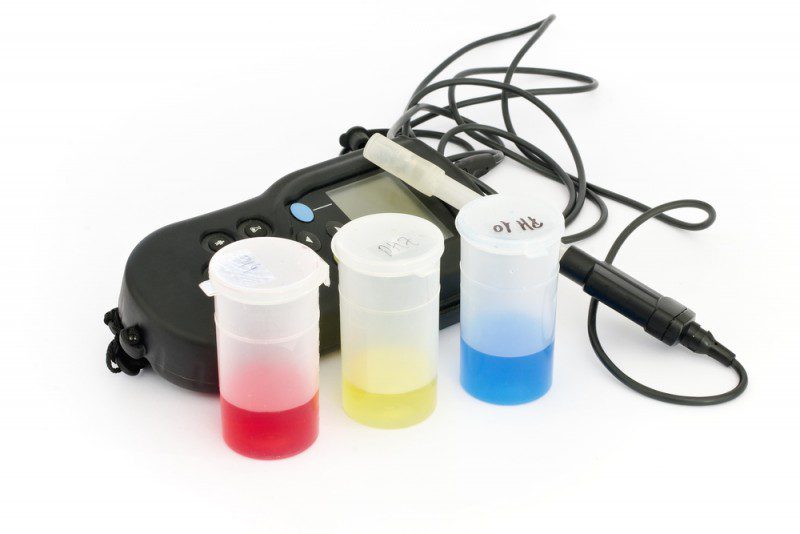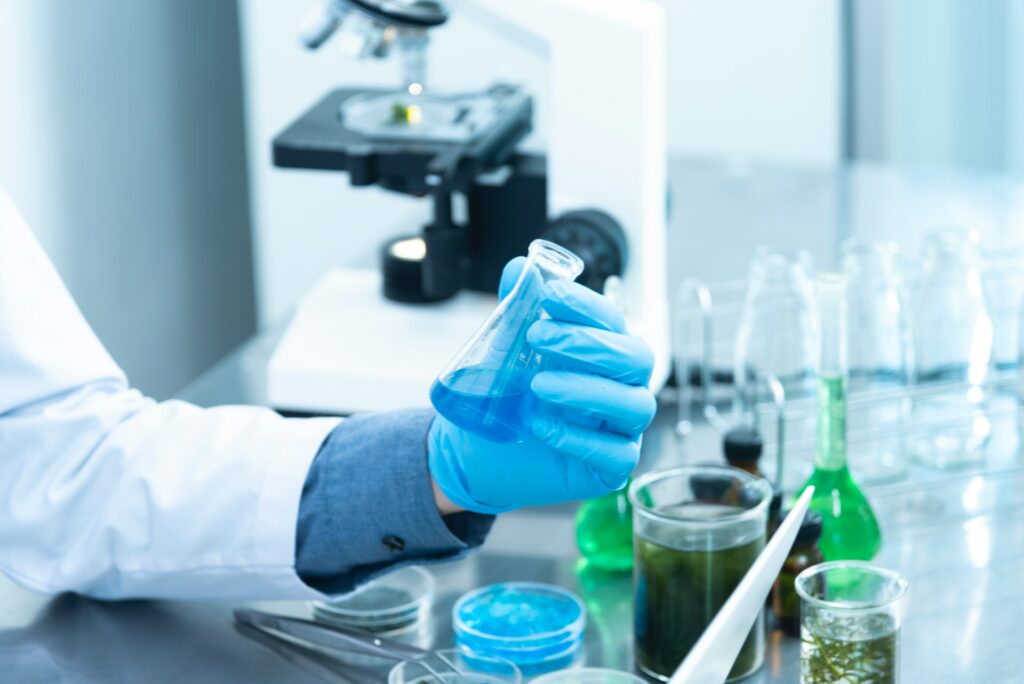08/28/2023 | pH | 8 MINUTE READ
Your Guide to Back-to-School pH Safety Rules

With the school year fast approaching, now’s the time to brush up on proper safety rules for the lab. While a school lab won’t be as dangerous as an industrial one, there are some inherent risks that exist regardless of the type of lab you’re in. For instance, you might be required to work with dangerous chemicals. There are also numerous fire hazards that must be considered when working in a school laboratory.
Many different issues can arise when performing risky procedures. Even if a procedure seems simple and risk-free, it’s oftentimes difficult to predict every potential scenario that might take place during an experiment. Regardless of the types of experiments you perform, there’s a good chance that you’ll work with pH sensors to measure water quality or the composition of other substances.
If you’d like to avoid having an accident in your school’s lab, it’s important to follow specific lab safety rules. This guide provides you with a more in-depth understanding of pH safety rules.

Importance of pH Safety in the Laboratory
Scientific experiments take many different shapes and forms. While the experiments you do at school might not be as advanced as the ones you’d perform at a medical research facility, you’ll still be tasked with obtaining measurements that allow you to form scientific conclusions.
School laboratories don’t often deal with more complex instruments like HPLC, AAS, or GC. However, every lab requires a pH sensor. These sensors are used to measure the results of all biochemical and chemical reactions. Process control reactions are also measured in manufacturing industries.
While pH readings aren’t too difficult to take, improper handling of the sensor can create a wide range of problems, which include everything from inaccurate readings to sensor damage. If you don’t measure a substance correctly, the inaccurate reading you receive could be used to make poor decisions that could produce hazards in the lab. Before you go back for the new school year, learn more about how to handle pH sensors.
Handling and Care of pH Meters
First, it’s important that you take care of the pH meters you use. A pH electrode is highly fragile. If you attempt to use the sensor as a stirring rod when adjusting the pH levels, the electrode could become damaged, which means that you might need to replace the entire sensor.
If you want to receive accurate readings, it’s imperative that you perform daily calibration of the meter with standard buffer solutions. Keep in mind that pH measurements are sensitive to temperature because of the changes that occur with the resistance of a glass electrode. Whenever the temperature increases by 30 degrees Celsius, the resistance will increase by 10-fold. Along with avoiding temperature fluctuations, make sure the sensor is never directly exposed to sunlight.

Proper Storage Practices for pH Equipment
Any pH sensor or electrode you use must be properly stored to ensure you continue to receive precise measurements. For instance, your sensors need to be stored at ambient temperatures that range from 10-30 degrees Celsius. If the storage area falls outside the ideal temperature range, the electrodes could become damaged.
Make sure you place protective caps on the sensors when they aren’t being used. These caps should be provided by the sensor’s manufacturer or supplier. You should store the sensor in a solution that ranges from 3.0-3.5M KCL, which means that the solution should have a specific potassium chloride content. Regularly check the solution to ensure it hasn’t evaporated.
Don’t leave the electrode out of the solution for a lengthy period. Eventually, the glass membrane will become dehydrated, which leads to a slower response when measuring pH levels. At worst, a total response failure could occur. Avoid immersing the electrode in a dehydrating solution, the primary of which include ethanol and sulfuric acid. Glass can be actively damaged by harmful chemicals like hydrofluoric acid, which is why you should never keep your sensor in this type of solution.
Preventing Contamination and Damage
You should take the proper steps to prevent contamination and damage to pH electrodes as well. As mentioned previously, you should never use pH electrodes as stirring rods. You can protect the sensor and keep it from being damaged by avoiding exposure to vibrations and shocks.
If you use magnetic stirrers, maintain the proper distance between the stirrer pellet and meter bulb to ensure accidental breakage doesn’t occur. You should never use a heated magnetic stirrer because of its ability to alter the solution’s temperature. When you’re transporting the sensor around or out of the lab, do so carefully to keep it from breaking.
Cleaning and Maintenance of pH Equipment
You’ll discover that there are different cleaning procedures for various types of contamination, which include everything from oil contamination to protein contamination. These cleaning procedures include the following:
- Deposits or bacteria – Soak the sensor in a solution of one part laundry bleach and 10 parts water for 10-15 minutes.
- General cleaning – If you’re using the sensor in water or a relatively clean substance, soak it in 0.1M HNO3 or 0.1M HCl for close to 30 minutes.
- Protein deposits – Soak the sensor in a solution of 0.1M HCl or 1% pepsin for around five minutes.
- Grease or oil – Keep the sensor in a methanol or detergent solution for a few minutes.
You should rinse the electrode in distilled water after each soaking. Any drops that remain need to be gently dried with a non-abrasive tissue paper. Never wipe or rub the pH sensor.

Safety Protocols for pH Measurements
There are also some additional safety protocols you should adhere to whether you’re taking pH measurements or cleaning equipment while in the lab. For one, make sure you follow all instructions given to you in a book or by your lab supervisor. You should be familiar with every step that’s outlined about the work you’re doing. If you have questions, ask them before getting started on a project. If you don’t follow these basic rules, you could:
- Ruin the results of your experiment
- Put yourself and others in danger
- Cause damage to your equipment
- Risk being suspended
When you’re taking measurements with a pH sensor, always use protective clothing, which includes lab coats, safety goggles, and gloves. The clothing you wear can protect you in case an accident happens. You should also opt for long pants and covered shoes. If your hair is longer, keep it up when taking measurements. Consider using hearing protection and other protective gear depending on the type of experiment you’re performing.
If ever there’s an issue or something goes wrong, you should know exactly where the safety equipment is located and how to properly use it. All equipment should be checked regularly to make sure everything’s in good working condition. The types of safety equipment that should be monitored include safety showers and eyewash stations.
pH Safety in Manufacturing Industries
When you’re taking a pH measurement, even a small variation in the readings you obtain can lead to substantial differences when it comes to chemical reactions and processes. For example, the pH of a particular substance can affect protein structure, cellular functions, and enzyme activity. A small variation in pH can be the difference between a mild chemical reaction and a severe one that you hadn’t anticipated.
Because of how volatile chemical reactions can be when pH levels have changed slightly, it’s essential that you receive accurate pH readings, which means that your sensor needs to be properly handled and calibrated. Along with changing a reaction, you might also encounter manufacturing losses if the reaction is damaging.

Reporting and Responding to Accidents
Accidents occur on a regular basis in any lab. However, following the correct safety guidelines and reporting accidents immediately after they occur can help you prevent future accidents. In fact, most labs have some type of plan that everyone will adhere to if an accident occurs. If an electrode breaks or a severe chemical reaction takes place, quick reactions can result in fewer injuries and less damage to the lab.
When an accident takes place, tell a supervisor immediately. Covering it up can lead to serious consequences, the primary of which is that someone else could make the same mistake. You should also receive medical attention as soon as possible. If you’re ever exposed to a pathogen or toxin, immediate medical attention is necessary.
Conclusion
When working in a lab, you’ll invariably use pH sensors to measure chemical reactions, water quality, and other solutions during experiments. Maintaining proper pH safety practices is important to avoid damaging the electrode. Always wear protective clothing and store the sensor in the right conditions. It’s essential that you carefully handle and maintain any pH equipment you use for personal safety and accurate results.
Posted by Dominic O'Donnell on August 28, 2023
Sensorex is a global leader in the design and manufacture of quality sensors for water quality and process applications. The company offers more than 2000 sensor packages for pH, ORP, conductivity, dissolved oxygen, free chlorine, chlorine dioxide, UV transmittance and other specialty measurements, as well as a full line of sensor accessories and transmitters. Its expert technical support engineers solve analytical sensor challenges with custom designs and off the shelf products.




